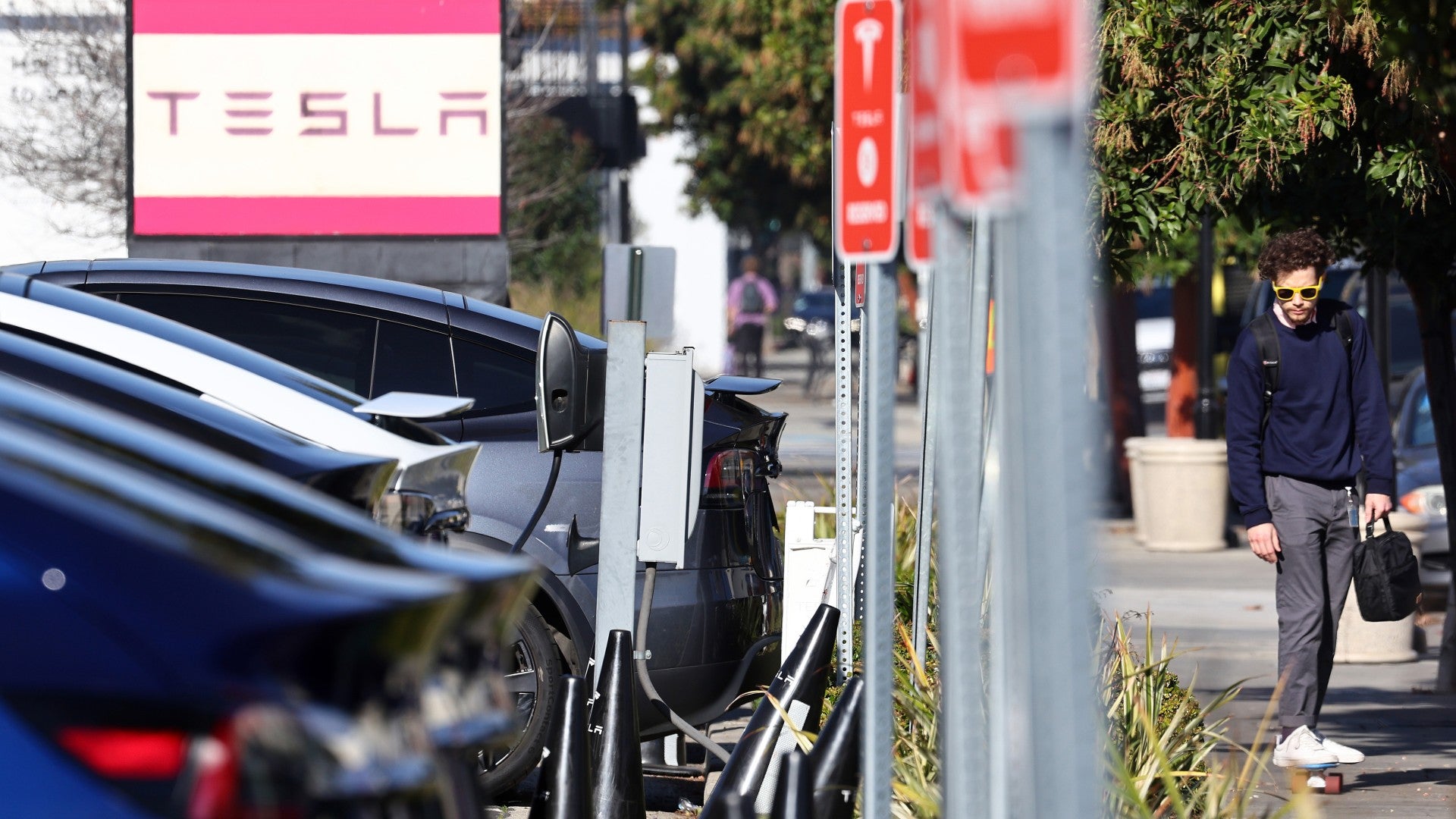
Electric vehicles (EVs) have oft been touted as the future of auto transport by producers and governments alike. While the dream of fully electrified roads may still be achievable, sales growth has stalled in the US and Europe, which may force a new approach from manufacturers.
In the last month alone, Toyota’s chairman estimated that EVs will reach a market share ceiling of 30%, Ford announced that it was reducing production of its flagship electric pickup the Lightning F-150, and car rental firm Hertz began the process of selling off some of its EVs.
GlobalData analyst Alastair Bedwell told Just Auto that Europe has been particularly impacted: “Anecdotal evidence suggests that battery EV (BEV) vehicle stocks in sales channels are building and BEV component suppliers report idling production lines in some cases as incoming orders fail to meet expectations.
“Germany’s mid-December snap decision to delete its BEV grant to private buyers has not helped the situation and has led to some brands seeing virtually no growth in 2023 over 2022. Overall, the BEV market grew by 32% in 2023 but the H2 result was just 22% as momentum drained away in the face of falling consumer disposable income and better supply of more affordable (than BEV) choices. There is considerable concern over the state of Europe’s BEV market and all the makings of a price war in 2024, despite some OEMs saying they won’t go down that route. There may be little choice in the end.”
EV passenger vehicle global sales growth was similar, at 35%. In a vacuum, this is still an impressive metric, but the industry is far from mature, only making up 14% of passenger vehicle sales in 2023, according to a GlobalData report. Much of this was due to the Chinese market, where 825,000 BEVs were sold. Even when global BEV and hybrid sales are combined, the electrified total remains under 40%.
Bedwell said that: “BEV stock levels in sales channels are increasing and production targets are being missed as the private buyer in particular continues to reject BEV models. China’s sales figures (wholesales, including exports) are somewhat flattered by continued high levels of BEV exports, reckoned to be 1.1 million units for 2023 as a whole. Nevertheless, good affordability in the Chinese NEV sector has supported domestic retail demand quite well.”
How well do you really know your competitors?
Access the most comprehensive Company Profiles on the market, powered by GlobalData. Save hours of research. Gain competitive edge.

Thank you!
Your download email will arrive shortly
Not ready to buy yet? Download a free sample
We are confident about the unique quality of our Company Profiles. However, we want you to make the most beneficial decision for your business, so we offer a free sample that you can download by submitting the below form
By GlobalData“Our 2023 figure for total light vehicle (LV) BEV sales is 10.8 million units, with the China light commercial vehicle (LCV) portion of this becoming significant as this segment electrifies. Chinese LCV BEV sales in 2023 were 280,000, up 100,000 on 2022 (+56%). China therefore accounted for 57% of global LCV BEV demand in 2023. Elsewhere, falling European PHEV sales were strongly offset by growth in China and the US, leading to a healthy +60% year-on-year increase in that segment.”
EV price pressure
Private buyers are choosing traditional cars over EVs for a range of reasons, but the largest is price. Electric vehicles are on average more expensive upfront than petrol and diesel-powered ones, though this evens out over time due to lower electricity costs. Government subsidies exist in many parts of the world to encourage buyers to make the switch, but at least in Europe, they are not doing enough.
This is why Bedwell sees price competition as highly likely, as well as the largest hurdle to their adoption: “Our assumption for Europe is that BEV pricing, already starting to see significant discounting compared to non-BEV cars, will support further growth in the market, but that it will not be spectacular. We’ve got a figure of +30% pencilled in which may seem optimistic but legacy OEMs can’t afford to get left behind in the BEV race and despite not wanting to offer discounts, they may have little choice in the face of a strong offer from Tesla and Chinese brands such as MG.
“I’d characterize the BEV market as bumpy rather than failing. Recent analysis of the European used BEV market, where affordability is better, is encouraging and points towards solid underlying demand for BEVs when the price is right. Battery durability concerns, while still there, have receded as data on their performance builds up.”
This is good news for consumers, and likely for the planet too, but it marks an escalation in the increasingly competitive world of consumer EVs.








